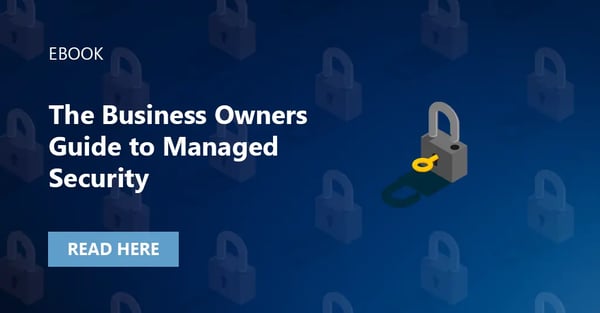If you’re like many business leaders we’ve met, chances are you want IT to “just work.” We get that. Your daily calendar doesn’t leave any room for dealing with technology problems. But you know technology is important… in fact, you know perfectly well that technology has become the backbone of today’s business world. In order to stay competitive, businesses need immediate access to accurate data, quick and personal connections with customers, the ability to do business just about anywhere, and protection from today’s most sophisticated cyber threats. Unfortunately, a lackluster IT network infrastructure can derail your best efforts or—at worst—put you out of the game entirely.
Here Are 5 Questions to Determine if Your Current IT Network Is Holding Back Your Business:
1. Are You Leveraging the Cloud?
It’s taken some time, but most businesses have caught on to the advantages of cloud computing. In fact, 80% of SMBs in the US view the cloud as a solution that contributes to business growth and collaboration. On the surface, it’s easy to see why leveraging the cloud for IT is an attractive option. On-premises IT solutions require physical servers, software, and manpower to handle day-to-day operations and maintenance. The cloud offers a less labor-intensive option for a fraction of the cost.
But cloud solutions are so much more. As a subscription-based service, cloud solutions provide flexibility. You can utilize the public cloud and enjoy the benefits of automatic upgrades and easy online access. If you need more control over processes and data, you can move to a private solution that offers the same benefits as the public cloud, with the added bonus of being exclusive to you and open to customization. Or you can take a hybrid approach for added scalability.
2. Is Your Network Secure from Hackers?
A strong password is a good start, but it isn’t enough. Without security measures in place, your data is still at risk. Two-factor authentication takes password protection to the next level by adding an additional layer of security. A single password would not be enough for a hacker to log in to your account or system when two-factor authentication (or 2FA) is in place. The second factor could be one of three things: something you know like a PIN number, something physical that you have such as a phone, or something biometric such as a fingerprint.
If you’ve ever withdrawn money from an ATM, you’ve already experienced two-step verification. Not only did you need your credit or debit card, but you also had to remember your pin number. Without both the card and knowledge of the password, you couldn’t have accessed your account. Other security systems you’ll want to have in place include:
- Firewall with deep packet inspection
- Intrusion detection and prevention
- Gateway anti-virus software
- Web content filtering
3. Are You Outsourcing to a Managed Services Provider?
A Managed Services Provider is a powerful ally for small and mid-size businesses. As businesses become more mobile, add more remote access points and move critical infrastructure to the cloud, an experienced MSP with a deep client bench depth amounts to a strong partner that can keep data secure and IT running smoothly. Without proper integration, security and management, you could be opening your business to considerable risk.
Outsourcing to a Managed Services Provider can take the stress off an already stretched IT department and budget, mitigate risk across all endpoints and provide the expertise you need to ensure data protection and secure cloud practices. Other security measures a Managed Services Provider can offer include network monitoring, email encryption, SPAM filtering, data backup, and disaster recovery.
4. Are You Prepared for Disaster?
Whether you’re satisfied with your current on-premises solutions or have begun integrating cloud solutions, you need a data backup and recovery system in place. As a business leader, it’s probably a phrase you hear often: "disaster recovery" - especially this time of year in hurricane season. But the honest truth is that you and your business just can’t afford to drown it out. Did you know that 20% of businesses experience a failure (fire, flood, power outage, natural disaster, human error, etc.) in any given year, and 80% of those businesses go under in just over a year? Yet, only 35% of SMBs have a comprehensive disaster recovery plan in place, according to Gartner.
Take a step back and look at the big picture. While keeping a physical backup of your data in an easily accessible location—on- or off-premises—may be convenient, it’s also risky. And yet nearly 60% of organizations still keep backups in only one physical location. Scary stuff. The enterprise-level cloud options for data backup that are now available to SMBs at an affordable monthly cost leave no more room for excuses.
5. Is it Time for a Technology Assessment?
If you’ve answered “no” to any of these questions or you’re not sure about the answers, it’s time for a change in your IT network. But before you start making adjustments, you need to fully understand the strengths and weaknesses of your current technology in relation to your business goals. A technology assessment can help you make the right decisions and enjoy a greater ROI.
A technology assessment provides an in-depth analysis of your current IT operations, takes your business goals, pain points, and compliance requirements into account, and then provides a roadmap for change. This enables you to troubleshoot efficiency problems and create a long-term strategy that aligns technology with business growth. You’ll also have a reference point for comparison once these changes are set in motion by your in-house IT staff, an IT services provider, or a hybrid of both. Remember, the world of technology—and regulation—evolves daily. If you don’t have a grip on it, you can easily get left behind. For more information, reach out for a free IT consultation.

![[BLOG] IT Support, Security & Managed IT Services](https://www.icorps.com/hubfs/2022%20Webp%20Image%20Files/Hero%20Images/New%20Upright%20Hublox%20webp.webp)

![[BLOG] 3 Reasons Businesses Are Using Microsoft Data Loss Prevention Webp](https://www.icorps.com/hs-fs/hubfs/2021%20Webp%20Image%20Files/September%2029/%5BBLOG%5D%203%20Reasons%20Businesses%20Are%20Using%20Microsoft%20Data%20Loss%20Prevention%20Webp.webp?width=600&name=%5BBLOG%5D%203%20Reasons%20Businesses%20Are%20Using%20Microsoft%20Data%20Loss%20Prevention%20Webp.webp)




